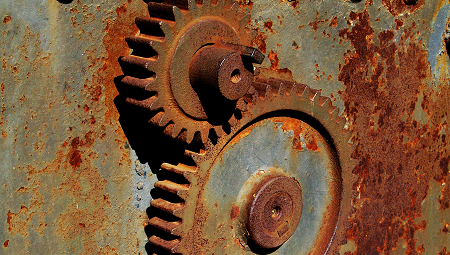The Black Ink Team's Guide To How Rust Forms
by Black Ink Team
If you have ever owned a piece of equipment for an extended period of time – a chain saw, a hydraulic press, a utility vehicle, etc. – then you have probably seen rust. Rust affects ferrous metals (metals containing iron) which are commonly used in the manufacturing of landscaping, construction, and agricultural equipment. It looks like a brown, flaky substance that gradually appears on and eats away at metal components – but what exactly is rust, and how does it form? If you are looking for the answer to that question, then you have come to the right place.

Rust is an iron oxide – a chemical compound consisting of iron and oxygen that forms through a combustion process. When a metal containing iron is in the presence of water and oxygen, the water acts as an electrolyte (a substance through which electrons can freely flow) and allows the iron in the metal to lose some of its electrons. The free electrons bond with iron atoms (either from the original metal itself or from another source) and oxygen atoms, forming rust.
Saltwater greatly increases the speed at which ferrous metals corrode into rust. This is because the addition of salt turns water into a better electrolyte, meaning electrons can flow through it more easily. The presence of more water also speeds up the rust forming process.
There are certain things you can do to prevent or slow down rust. Keeping the metal away from water would be the first step. A more involved protection method would be galvanization – covering the metal with a thin layer of zinc. Or, you can cover it with a layer of paint.
